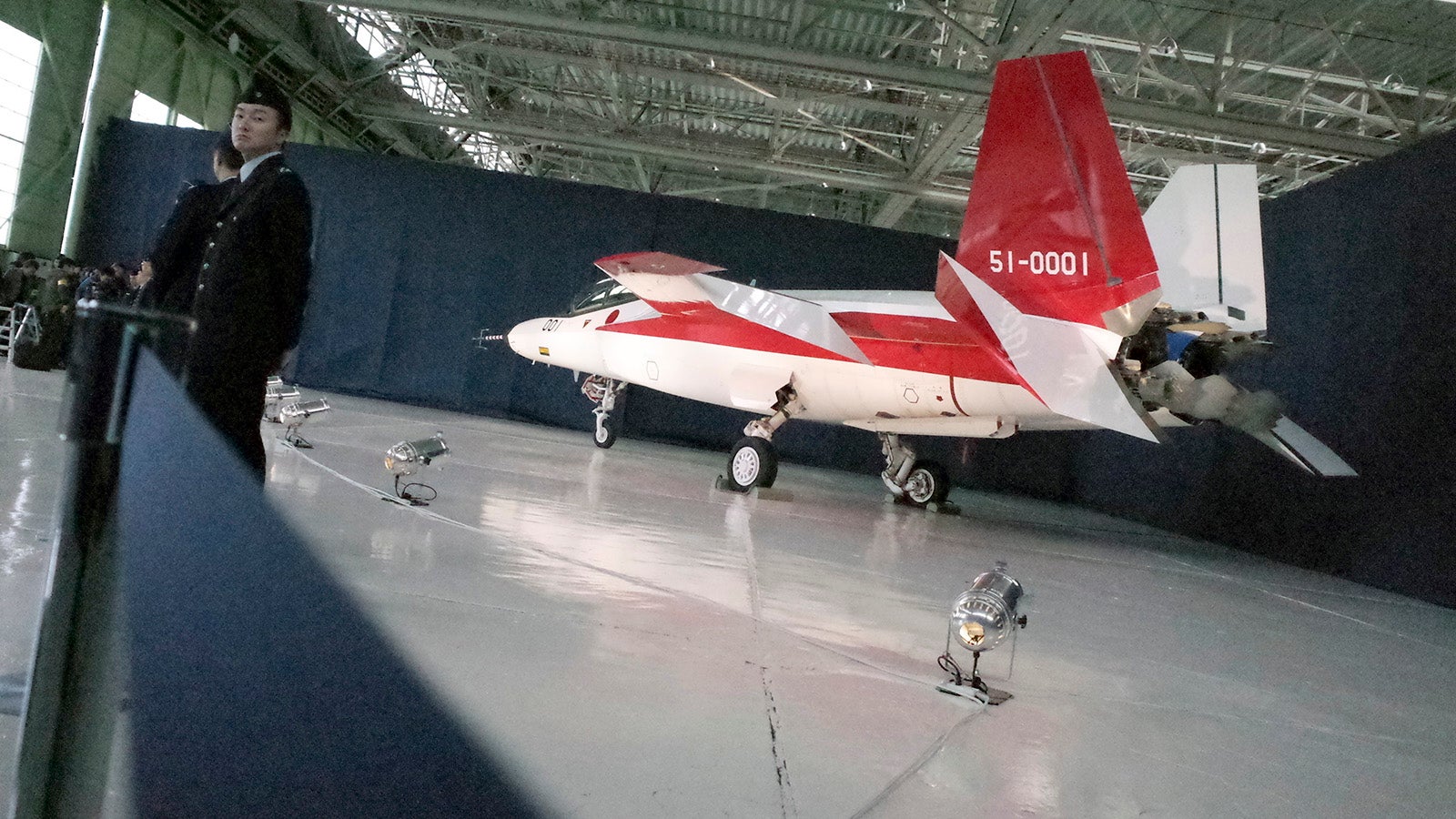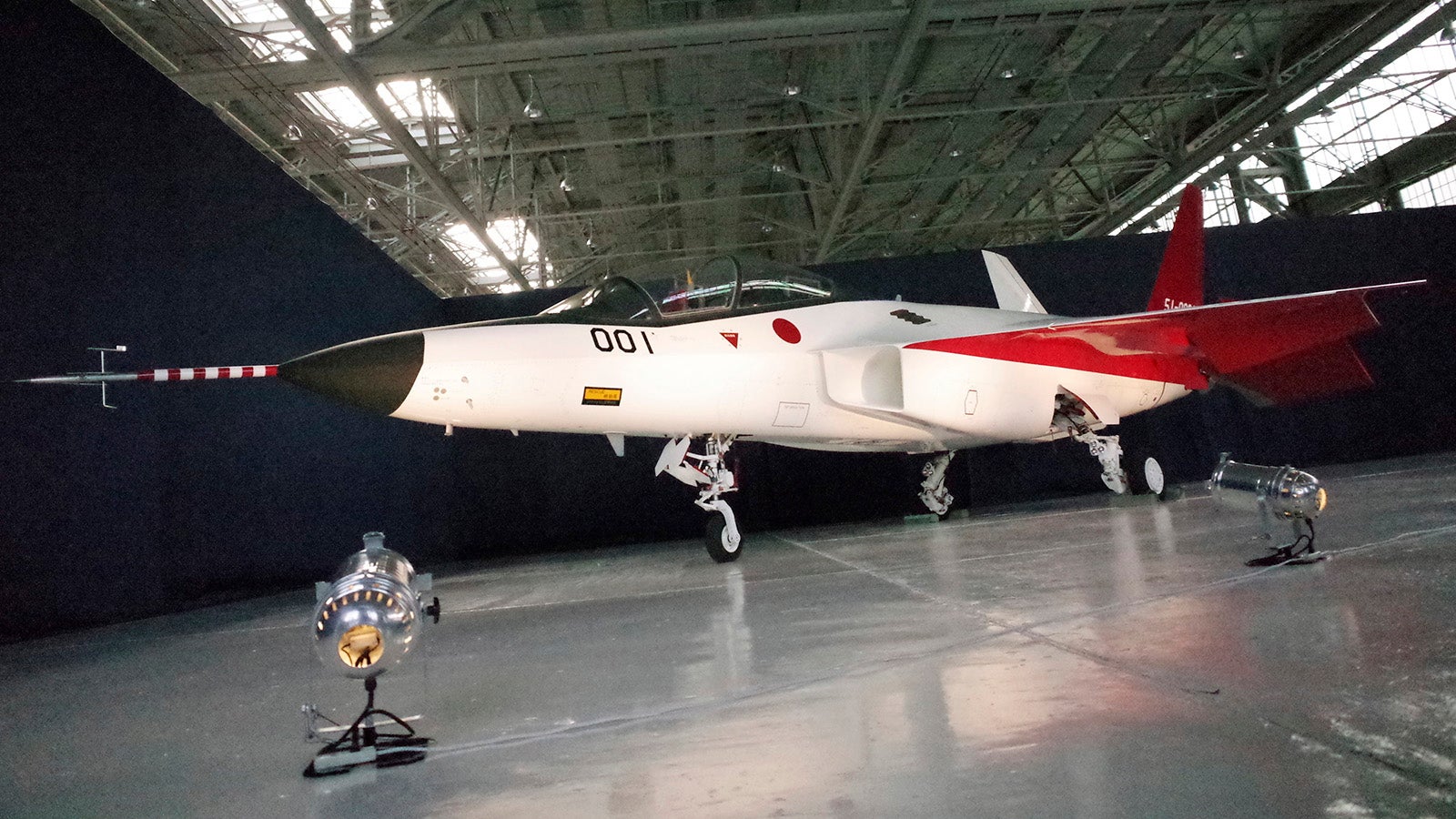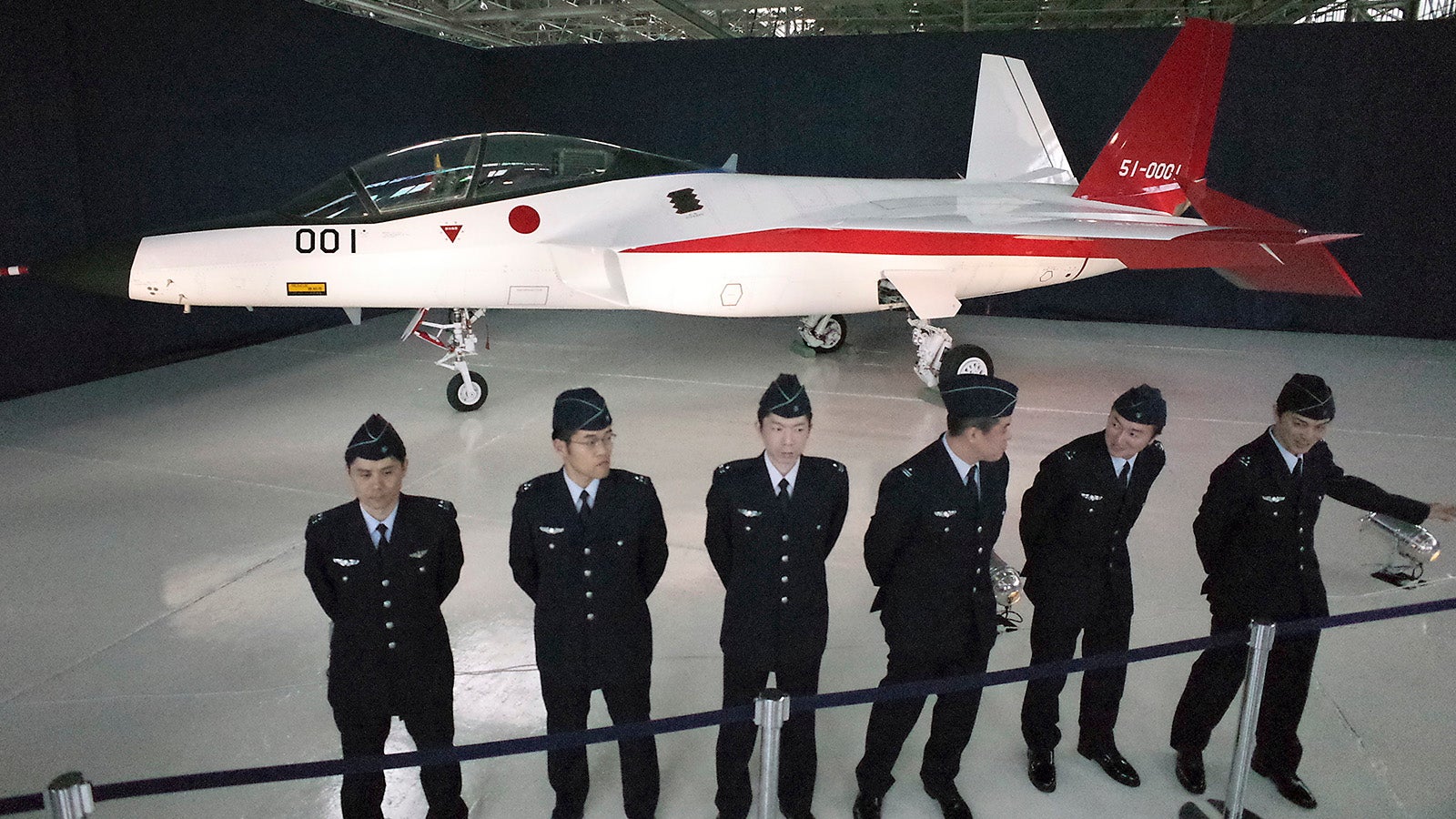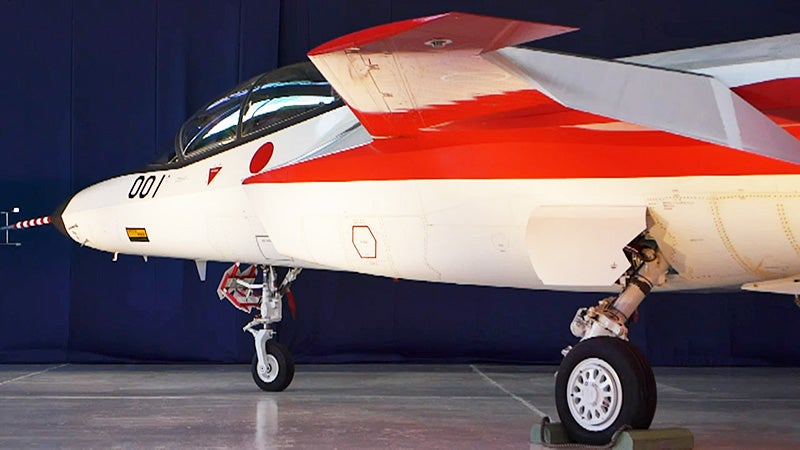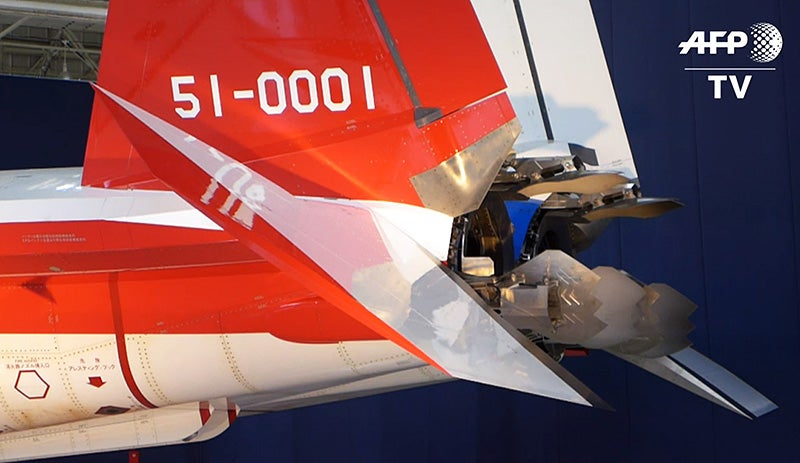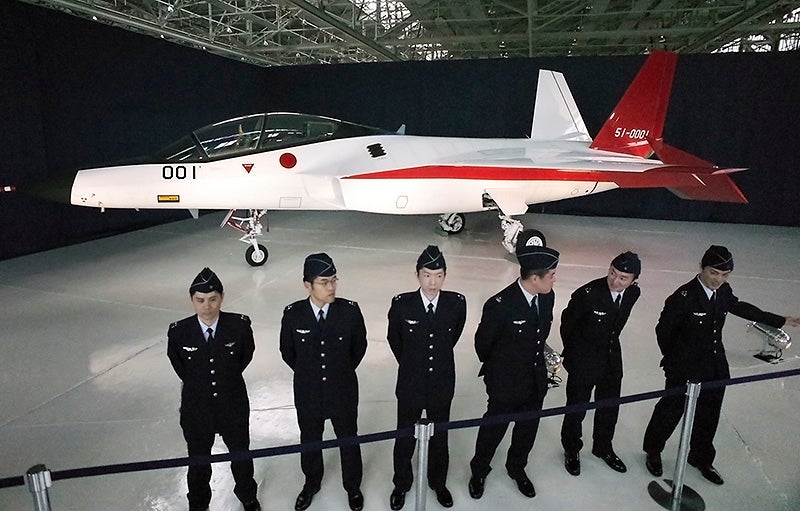Everything We Know About The X-2, The Future Of Japanese Stealth Fighter Design
Today the world got to know the jet that’s critical to Japan’s indigenous fighter design future. Until now, photos have been far from detailed and only showed limited angles. With today’s official unveiling, the world has a clearer view of what to expect from the X-2.
A production variant, or some design based off the information that will be garnered by testing the X-2, is the end goal for Japan. The idea is for this aircraft’s design, and the subsystems that will fly on it, to be melded into a new indigenous fighter that will take to the skies towards the end of 2020s.
You may notice it almost looks like a jet trainer version of the F-22 Raptor. That should come as no surprise. Beyond using existing designs for a stepping off point, Japan
had a serious lust for F-22 and offered to buy them really under any circumstances. This was controversially denied and the F-22 was made unexportable by law. Fast forward almost a decade and Japan seems to be trying to build their own.
The Mitsubishi ATD-X, now dubbed the X-2,
was actually unveiled a year and a half ago, albeit in a much less intimate manner than the media event that occurred today. But with today’s reveal came many more details about this very important design.
The most notable feature is the the X-2's elaborate thrust vectoring system. It uses a trio of “paddles” on each engine exhaust that allow for independent high-angle deflection of each jet’s exhaust. Similar multi-dimensional thrust vectoring concepts have been used in the past, most notably by the
X-31, which still remains the most maneuverable fighter-sized jet ever created.
Here is the X-31 in action:
The paddle-style thrust vectoring setup was also used on
NASA F/A-18 HARV (High-Alpha Research Vehicle) test aircraft. HARV was also super-maneuverable and able to maintain controlled flight in the post-stall environment, even at extreme angles of attack.
The inclusion of this same sort of the thrust vectoring system, one that is not really conducive to a stealthy design, means Japan is looking to explore the realm of super-maneuverability as much as stealth with the X-2. There seem to be some superficial edge alignment design elements present in the paddles themselves which may reduce their radar reflectivity from certain angles, but by and large they are a hindrance to the jet’s radar supposed low radar cross-section. These paddles could be replaced by nozzles after certain test points have been reached.
As far as low-observability to radar goes, the X-2 has many of the features seen on modern stealthy fighter designs optimized to elude X, C and Ku band radars. These features include saw-toothed edges on major access panels and on articulating doors used in flight, such as the gear doors. The nose section has a sharp chine-line like those found on all stealthy aircraft. Twin tails are canted outward, and the aircraft has a smooth skin with a contentiously changing radius. Its intake ducts also appear to be shaped to shield the highly reflective faces of the jet’s turbofan engines.
The aircraft appears to be in an evolutionary state somewhere shy of the F-35's progenitor, the X-35. The fact that it really is a testbed aircraft for multiple technologies, not a single integrated design, at least yet, makes its lack of sophistication understandable.
Some features needed for initial test flights, especially those concerning flight envelope expansion, negate the design’s attempts at a low radar signature, but retrofits and/or follow-on prototypes will most likely eliminate those features (flight-test nose instrumentation, antennas, paddle exhausts, etc.)
Beyond stealth and thrust vectoring, the aircraft, which has had the “Spirit Of The Heart” nickname informally attached to it, is said to also be a surrogate for testing a whole load of other technologies that are not really visible on the outside.
A next generation active electronically scanned array (AESA) radar will fly aboard the jet at some point. Japan was the first country in the world to fly an AESA radar aboard an operational aircraft, their
F-2 fighter. The radar was plagued with problems, but the technology has come a long way since and is on the
“must have list” of any modern fighter, old or new.
It is likely that this new radar will feature secondary modes for electronic attack, high-bandwidth communications and passive surveillance of the radio frequency spectrum. These are just some of the latent and shadowy capabilities of AESA radar systems that are now just being explored outside of a blanket of secrecy.
The X-2 will also test a fly-by-fiber-optic flight control system (FCS). This “intelligent” FCS is by its very nature highly redundant and resistant to electronic interference. It could also be able to compensate for battle damage and major aircraft malfunctions, especially when tied seamlessly to the jet’s three dimensional thrust vectoring system.
The X-2 will also eventually fly with Japan’s most advanced electronic surveillance and countermeasures systems. These systems may not only be refined and used on a future X-2 derived fighter design, but they could be retrofitted to older combat aircraft still in service with the JASDF.
Last but certainly not least, the X-2 will fly with advanced turbofan engines known as the IHI XF5-1. Not much is known about this new powerplant, but it is a smaller engine with a high output for its size and weight. It may give the diminutive X-2 enough dry thrust (without afterburner) to achieve sustained super-cruise (supersonic flight without afterburner). The engine will likely be developed further for a larger production variant of the X-2.
Japan also has the F-35As on order, and they will surely learn a great deal by operating and maintaining it, much of which will also likely be spiraled back into their future fighter design.
Japan will spend huge mountains of Yen to keep their indigenous defense industries propped up and producing relevant weaponry. The X-2 is a manifestation of this and has
already accrued a bill of $332 million. But this time Japan may be aiming at exporting their future fighter design as well as fielding it for their own use. Considering they will already have the F-35s for years by the time a new design is operational, offsetting the costs of “remaking the wheel” by their own hand may be found on the world’s increasingly active fighter jet market.
Regardless of whether Japan ever realizes their indigenous fifth generation fighter dreams on any relevant scale, it will be very interesting to see the X-2's development and testing progress.
The aircraft is set to make its first flight by end of this quarter.




 ?
?
